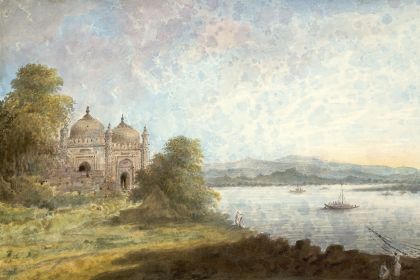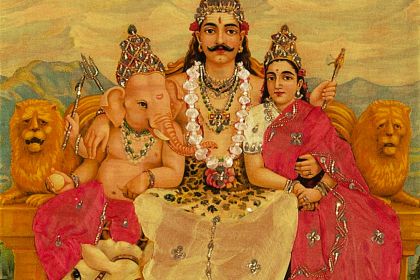MEDITATION
Rudra Veena: evolution of the instrument and Lydian mood of the Yaman raga

A Bin Player by William Gibb
Music Period: Indian Classical
Country: India
Genre: Raga
Musical Mode: Lydian Mode
Piece of Music: Yaman Raga
Artist: Zia Mohiuddin Dagar
Rudra veena is a string instrument originating from the Indian subcontinent where different types of veena have existed since at least 1500 BC. According to one of the legends, the instrument was created by the Hindu deity Shiva, lending his Vedic name Rudra to this particular type of veena.
The Rudra veena construction includes a long tubular neck with melodic and drone strings as well as two resonators made of gourds attached to the ends of the neck. Technically, an instrument with such a design cannot produce a loud sound, which explains why it used to be chiefly employed in vocal training as it makes it easier for singers to learn their parts.
In the mid-20th century, the Rajasthani court classical musician Zia Mohiuddin Dagar developed a new design for the Rudra veena and presented it as a solo instrument. He added a lot of changes to the neck design, allowing for the clearer performance of the slow alap sections in classic ragas, while also providing the veena with frankly huge resonators to generate enough volume even when performing the double-bass-like glissandos.
Curiously, Dagar's father was strongly against the modernization of the instrument, hence why any constructive improvements were made only after his father's death.
Listen to Raga Yaman performed by Zia Mohiuddin Dagar:
It is believed that Yaman raga was composed in the 13th century by the Indo-Persian Sufi poet Amīr Khosrow who was inspired by the North Indian folk tunes. This raga is one of the fundamental works of Indian classical music and usually serves as the starting point for novice students.
Raga Yaman is performed in the Kalyan thaat—the Indian classical music scale identical to the Lydian diatonic scale of Western classical music. The Lydian scale is the major one, therefore the raga is designed to be performed in the evening at the very beginning of the concert to set a warm and soothing tone.



